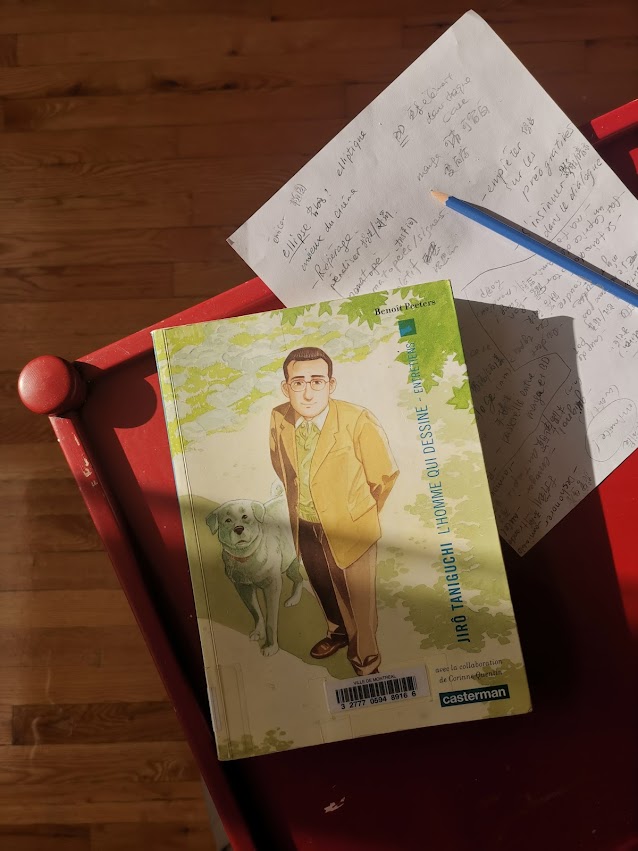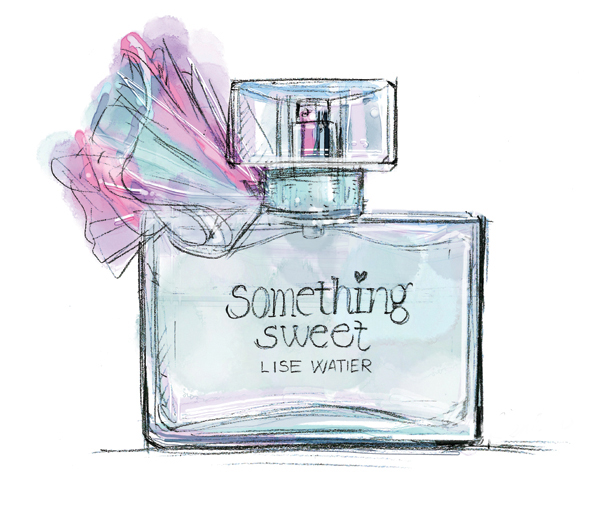BOOK | L'Homme qui dessine : Jirô Taniguchi entrevue | 谷口治郎: 孤独的漫画家
⭐孤独的漫画家——你所不知道的谷口治郎 / The Lonely Mangaka—Jiro Taniguchi (1947-2017) Recommended French book
[Jiro Taniguchi - L'HOMME QUI DESSINE] (The Drawing Man - Interview with Jiro Taniguchi) 2013 (66 years old) by Benoit Peeters | Corinne Quentin
What a blessing to have found the love of your life and something that lasts!
I read this book recently, and this is the deepest feeling I had.
Jiro Taniguchi is a steady and late bloomer. Before his debut, he worked as an assistant to 上村一夫 Kazuo Uemura ([同棲時代]) and made his debut by drawing adult erotic comics. Later, his works included gun fight comics, fighting comics, and animal comics. I started getting into French comics when I was an assistant to Kazuo Uemura. In my middle age, my works were welcomed and successful by the French comics industry. "孤独的美食家"(The Lonely Gourmet) was popular in Asia, and "The Mountain of the Gods" was popular in Europe, but not very famous in Asia. Some readers said that his paintings were "facially blind" and "facially paralyzed", and he himself admitted that "my paintings are very stiff."
Every person/artist has his or her own limitations, and there is no need to pursue omnipotence. Just accept your imperfections, embrace your strengths, and express yourself naturally.
【Professional】
The difference between French and Japanese comics in Jiro Taniguchi's eyes BD vs MANGA
- Style: French comics tend to be realistic and complex, while Japanese comics tend to be simple and leave blank spaces. The facial features in Japanese comics are more exaggerated, making it easier to understand the characters’ emotions. “But I prefer to use back figures and movements to express characters’ emotions.”
- Scene: French comics have more elements (scenes), almost every frame describes the scene, while Japanese comics mostly leave blank spaces and omit them.
"French comics are more like Actor Studio, and Japanese comics are more like Theater. I hope to use it to enhance the realism and exaggerate the emotions of fictional stories."
- First draft: French comics’ pencil drafts are very detailed and complete, while Japanese comics don’t have too many details, which can only be seen when drawing lines with a pen.
- Dialog box: French comics tend to add a layer of dialog boxes after the picture is completed, while Japanese comics are directly embedded in the picture and are part of the composition.
- Copywriting/dialogue: French comics are more literary, psychological and philosophical, more like movies
- Onomatopoeia: Japanese comics and American comics are more common
- Editor: Japanese comic editors participate in the creation, more like a producer, while French comics do not interfere much with the author's ideas.
- Reading order: Japanese comics from right to left, French comics from left to right
 |
| Reading Order Changes the boxes order Left:Original Japanese version - Right:French Version |
- Creation: "French cartoonists create more freely and are more like artists. They are involved in a wide range of things: illustrations, posters, film storyboards... I am more like a craftsman, and I want to be as free as them."
- Book Size: French comics are usually large format, about twice the size of Japanese comics. "I'm usually used to drawing in small sizes. If it's larger, I have to dig out the details again~"
- Assistant: One-half of the scenes are painted by assistants, and there are often unexpected surprises.
- Screentone: I basically still use traditional dot stickers, many of which are no longer produced, so I also start using computers.
- Coloring: Color directly on the original
【Jiro Taniguchi's manga style】
- Image details: Jiro Taniguchi’s works are a good fusion of the styles of French comics and Japanese comics. Although many scenes are left blank and omitted, they also express the authenticity of the story. "It doesn't mean there are too many details, but it has a sense of reality. I also try to restrain the details. If I don't restrain myself, I will go crazy with the details~ [laughs]"
 |
| Jiro Taniguchi's early work ZERO - from his childhood. A Tezuka Osamu-ish(手冢治虫 )style |
- Rhythm / lens language: Influenced by Ozu Yasujiro's films, slow-paced and life-like
- Diverse themes: When I debuted, I drew adult erotic comics, gun battle comics, fighting comics, animal comics...
- Audience: The classification of French books is not very obvious, so there are books for all ages. Japan categorizes content by age. Most of Taniguchi's readers in Japan are women. The Japanese comic industry is not very interested in French comics, so Taniguchi Jiro's success in France did not boost domestic sales in Japan. Every time I create, I don't think much about the international market, but I still insist on creating for the Japanese audience.
- Timeline / Relationship with French BD
1970 (23 years old) worked as an assistant to Kazuo Uemura and started to get in touch with French comics (Mœbius)
1971 (24 years old) Debuted as a Mangaka(Cartoonist/Auteur de bande dessinée)
1990 (43 years old) 【The Walking Man】 (歩くひと, Aruku Hito) was published in Europe and was well received and won awards.
1997 (50 years old) collaborated with Mœbius (script) on [IKARO], which was not a big hit
2017 (69 years old) 【光年の森】( La forêt millénaire ) He tried to use paper horizontal panels to compose the picture, but it was not completed. last work
 |
| Jiro Taniguchi with French BD artists / Lorenzo Mattotti, Giardino and Baru |
 |
| Jiro Taniguchi and Mœbius |
 |
Le Gourmet solitaireKodoku no Gourmet 【孤独のグルメ】 -《孤独的美食家》日文原版封面 |
【Daily Life】
timetable:
- 11:00 Reading newspaper
- 12:00 Go out, walk to the station, take the tram to the studio, pass by the library/bookstore, have a coffee sandwich
- 13:30 Studio (Assistant arrives at 10-11 o'clock)
- 17:30 Occasionally go out for a walk and rest, my wife brings a lunch box, take a walk, rent DVDs/bookstore
- 19:30 Return to the studio to continue (assistant has left work)
working habit:
-Output: 80 pages / month when young, now 30-40 pages/month
- Unable to work from home, unable to work while traveling, can only find rhythm in the studio
- I like to watch zombie movies to relax my brain. When I’m not working, I like to go to parks and bookstores.
- My wife will read a lot of comics, including those by young authors, and will give a lot of suggestions and opinions.
- Only work on one project a day
- Compared to writing stories myself or cooperating with writers to adapt, my favorite creative mode is to adapt existing novels
- I like to work in natural light. If the scenery outside the studio window is good, I will open the curtains, and if the scenery is not good, I will close them.
- Generally listen to pure music/movie soundtracks (storytelling)/foreign language songs (the lyrics are less disturbing than Japanese songs): Brian Eno, Genesis, Bob Dylan, Air (France), world music. The assistants like to listen to rock, punk, and electronic music, but I think it's too repetitive.
 |
| Jiro Tanigochi's early manga work |
 |
| Jiro Tanigochi's early manga work |
【Q&A】
Q: About loneliness?
A: Cartoonist is a lonely profession. I can imagine freely. This is what I enjoy and am good at. I don’t have many close friends, the ones I see the most are my editors. When I was a young assistant, I had many friends with whom I played, but gradually we lost contact with each other.
Q: About sports?
A: My current exercise is just walking. I like to observe the changes in trees and imagine what kind of historical changes they have experienced and witnessed. Therefore, drawing cartoons about extreme sports is a reverse compensation for being able to only stay in the studio. Follow the paintings. Travel and experience another life.
Q: What themes do you want to try?
A: You can only draw themes that you like, not the hot-selling themes suggested by others and the themes that you want to try: science fiction, ghosts, poetry (haiku), psychology, but you may not be good at girls and comedy. Politics is also okay. Japanese people don’t care much about or participate in politics (because the movement in the 1960s was ineffective). I also treat it from the perspective of a bystander. I am more interested in the themes of white people/original Indians. I also want to paint some works without figures or humans, only scenery and animals/objects. Too much, not sure I have enough time to finish.
 |
| Jiro Tanigochi with his assistants in the atelier |
 |
| Jiro Tanigochi's parents |
 |
| Jiro Tanigochi's early manga work and assistant life |
 |
| Jiro Tanigochi's early manga work |
 |
| Jiro Tanigochi's early manga work |
Q: Favorite painter?
A: Klimt, Schiele, Andrew Wyeth, Edward Hopper, some works with narrative and mysterious compositions
Q: What is the meaning of comics?
A: When Japan was hit by the earthquake, I felt very powerless. I was wondering if comics still have meaning? Until a reader wrote to ask about the ending of the serialized [Furari] at that time, because the magazine could not be purchased due to the earthquake. This makes me feel that my work still has some meaning.
Q: Will you use computers to draw in the future?
A: I'm very interested, but my energy is limited and I may not have much time left. I'd better leave this to young people to practice.
Q: Regret?
A: There is nothing to change about the past. When I was working as an assistant 40 years ago, I never imagined that I would be able to become a solo cartoonist. I felt very satisfied when I could earn royalties by drawing adult cartoons when I debuted. I am where I am today thanks to luck and the help of the editors I met. I just hope that I can stay healthy and be able to continue to complete some of the ideas I want to complete. Sometimes, so-called "huge success" scares me. (This interview was conducted when Mr. Taniguchi was 66 years old, and he passed away 4 years later (2017))
 |
| Jiro Tanigochi worked at Kyoto for a summer time before he moved to Tokyo |
 |
| Jiro Tanigochi - The Walking Man (歩くひと, Aruku Hito) |
 |
| Jiro Tanigochi - The Walking Man (歩くひと, Aruku Hito) |
孤独的漫画家——你所不知道的谷口治郎 (1947-2017)
法语书籍推荐【Jiro Taniguchi - L'HOMME QUI DESSINE】(画画的人- 谷口治郎访谈录) 2013 - 66岁
能找到一生挚爱并持续的事情,多么幸福啊!
最近读了这本书,最深的感触就是这个。
谷口治郎属于稳扎稳打,大器晚成型,出道前给上村一夫(【同居时代】)当助理,画成人情色漫画出道,随后作品涉猎过枪战漫画,搏击漫画,动物漫画。给上村一夫当助手时期开始接触法漫,中年时期作品受到法国漫画界欢迎和成功,【孤独的美食家】在亚洲受欢迎,【神之山岭】在欧洲受欢迎,在亚洲却不太有名。有读者说他的画“脸盲”“面瘫”,他自己也承认“我的画很僵硬”。
每个人/艺术家 都有自己的局限性,也没必要追求全能,接受自己的不完美,拥抱自己的长处,自然地表达就好。
【专业篇】
谷口治郎眼中法漫 vs 日漫 的区别 BD vs MANGA
- 风格:法漫偏写实繁复,日漫偏简约留白。日漫表情五官更夸张,易于理解角色情绪。“但我更喜欢用背影和动作表达人物情绪”
- 场景:法漫画面更多元素(场景),几乎每一格都交代场景,日漫多留白,省略。
“法漫偏 Actor Studio,日漫像Theatre,我希望通过它来加强虚构故事的真实感和渲染情绪。”
- 起稿:法漫铅笔稿很详细完整,日漫不会太多细节,钢笔勾线时才会。
- 对话框:法漫偏向于画面完成后再加一层对话框,日漫直接嵌入画面,属于构图的一部分
- 文案/对白: 法漫更偏文学性,心理学和哲学,比较像电影
- 拟声词:日漫与美漫较多
- 编辑:日漫编辑参与创作,更像制片人的角色,法漫不太干涉作者的构思
- 阅读顺序:日漫从右→左,法漫左→右
- 创作:“法国漫画家创作更自由,更像艺术家,他们涉猎广泛:插画,海报,电影分镜... 我更像工匠,我也想像他们那般自由”
- 尺寸:法漫常为大开本,大概是日漫的两倍。“我一般习惯画小尺寸,再大我就又要抠细节了~”
- 助手:二分之一的场景由助手画,时常会有意想不到的惊喜。
- 网点:我基本还在用传统的网点贴纸,有很多已经不生产了,所以也开始用电脑了
- 着色:直接在原稿上色
谷口治郎的漫画风格
- 画面细节:谷口治郎的作品很好地融合了法国漫画和日本漫画的风格,虽然很多场景的留白和省略,却也表达出了故事的真实性。“不是细节多,就有真实感了。我也尽量克制细节了,如果不克制,我就要抠细节抠到疯~[笑]“
- 节奏/镜头语言:受小津安二郎电影的影响,慢节奏,生活化
- 题材多样:出道时画过成人情色漫画,枪战漫画,搏击漫画,动物漫画...
- 受众: 法国书籍分类不太明显,所以各年龄都有。日本按年龄分类内容,谷口日本国内读者大部分是女性。日漫界对法漫不太感冒,所以谷口治郎在法国的成功并没有促进日本国内的销量。每次创作的时候不太考虑国际市场,还是坚持以日本受众进行创作。
- 时间线 / 与法漫的结缘
1970(23岁)给上村一夫当助手,开始接触法国漫画 (莫比乌斯 Mœbius)
1971(24岁)漫画家出道
1990(43岁)【行人】The Walking Man (歩くひと, Aruku Hito)在欧洲出版,受到欢迎并获奖
1997(50岁)与Mœbius(剧本)合作【IKARO 异卡力】,没有大卖
2017(69岁)【光年之森】(The Thousand-Year-Old Forest)尝试用纸张横板构图,但未完成。最后一部作品
【日常篇】
作息时间表:
- 11:00 读报
- 12:00 出门,步行去车站,坐电车去画室,路过图书馆/书店,咖啡三明治
- 13:30 画室 (助手10-11点到)
- 17:30 偶尔出去遛弯休息,妻子送便当来,散步,租DVD/书店
- 19:30 回画室继续 (助手已下班)
工作习惯:
- 产量:年轻时 80页/月 ,现在 30-40页/月
- 无法在家工作,无法在旅途中工作,只能在画室才能找到节奏
- 喜欢看zombie僵尸电影来放空大脑,不工作的时候喜欢去公园和书店
- 妻子会看很多漫画,包括年轻作者的,会给很多建议和意见
- 一天只做一个项目
- 比起自己写故事或是与作家合作改编,最喜爱的创作模式是改编现成小说
- 喜欢自然光下工作,画室窗外的风景好的话会把窗帘打开,不好的话就会拉上
- 一般听纯音乐/电影原声(有故事性的)/外语歌(比起日语歌,歌词会少一些干扰):Brian Eno, Genesis, Bob Dylan, Air(法国), 世界音乐。助手们喜欢听摇滚,朋克,电子乐,但我觉得太重复了。
【漫画术语】(法语)
【Q&A】
Q:关于孤独?
A:漫画家是孤独的的职业,我可以自由地想象,这是我享受和擅长的。我没有太多亲密的朋友,我见得最多的就是编辑了。年轻当助手时期,有许多一起玩的朋友,渐渐地大家都不怎么联系了。
Q:关于运动?
A:我现在的运动只是散步,喜欢观察树木的变化,想象它们经历和见证了怎样的历史变迁,所以画极限运动题材的漫画,是只能呆在画室的一个反向补偿吧,跟着画作去旅行和体验另一种人生。
Q:想尝试的题材?
A:只能画自己喜欢的题材,而不是别人建议的热销的,想尝试的题材:科幻,鬼怪,诗歌(俳句),心理学,但少女和喜剧可能不擅长。政治也可以,日本人不太关心和参与政治(因为60年代的运动没什么成效),我也是更多的旁观者的角度来对待它,我对白人/印第安原著民的题材比较感兴趣。还想画一些没有人物,没有人类的,只有景色和动物/物件的作品。太多了,不确定我的时间还够不够完成。
Q:喜欢的画家?
A:Klimt, Schiele,Andrew Wyeth,Edward Hopper,一些构图有故事性的和神秘感的作品
Q:漫画的意义?
A:日本大地震时,我感到很无力,我在想漫画还有意义么?直到有读者来信询问当时连载的【Furari】的连载结局如何了,因为地震买不到杂志。这才让我觉得自己的工作还有点意义。
Q:未来会用电脑作画么?
A:我很感兴趣,但我的精力有限,剩余时间可能无多,还是把这个留给年轻人去实践吧。
Q:遗憾?
A:对过去的事情没有什么要改变的。40年前当助手的时候,都没想到能够成为独当一面的漫画家,当出道时画成人漫画能赚稿费的时候就感觉很满足了。全靠运气和我遇到的编辑们的帮助我才有了今天,我只希望身体可以保持健康,能够继续完成一些想要完成的构思。有时候,所谓的”巨大的成功“让我感到畏惧。(此采访于谷口先生66岁之际,4年后(2017)他逝世了)
———— 20240311 at Montreal
























Comments
Post a Comment
Thank you for your comments :)